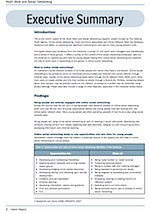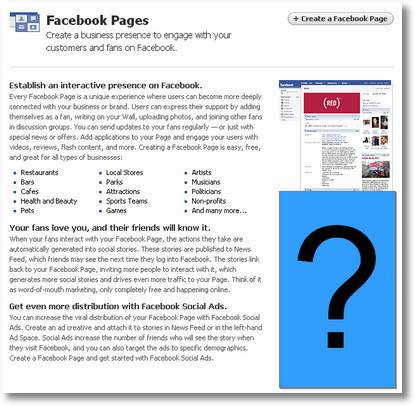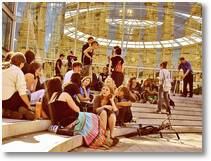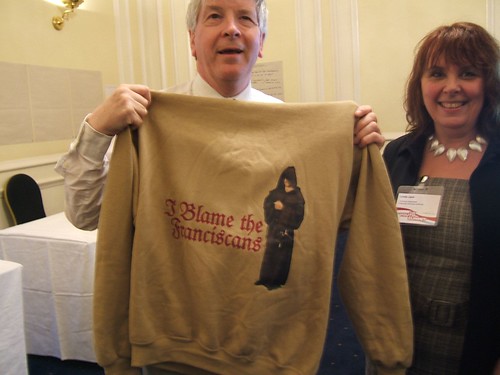[Summary: assorted learning from participation and hack-days applied to ideas about a youth-focussed digital innovation lab.]
Right Here, Comic Relief and Nominet Trust have a really interesting tender out right now for someone to deliver two ‘Innovation Labs’ focussed on helping “young people to look after their mental health and to access appropriate help and support”.
They describe how the labs should provide young people with “the opportunity to work with mental health, youth work and design professionals to design digital tools that will meet their needs.” If it weren’t for the unknowns of the schedule for my PhD that starts in October, it’s exactly the sort of project Practical Participation would be putting in a proposal for*, but, with the freedom to adopt a more open innovation exchange style bit of sharing around a proposal, and having been unable to resist jotting a few notes about how I might approach the tender, here’s a few quick reflections on youth-focussed digital innovation labs, drawing on learning from previous participation projects.
Digital innovations are not always digital
In my experience working with youth services and mental health services exploring use of digital tools, the biggest gaps between the potential of digital tools and their use in practice is not down to a lack of Apps or widgets – but comes down to a lack of training, inadequate policies, or other small barriers.
The most effective outcomes of a digital innovation lab could be how to guides for practitioners, youth-led training for mental health workers in how to engage online, or new protocols that make sure mental health staff have a framework and incentives to make use of digital tools – as much as they might be new apps and websites.
Set up to succeed
I’ve experienced and observed a number of participation projects in the past that have, mostly unintentionally, set young people up to fail by asking them to redesign services or systems without reference to the staff who operate those systems day-to-day, or the realities of the budgetary and legal constraints the services operate under. Instead of empowering young people to bring their lived experience to real problems, whilst avoiding organisational agendas crushing the ideas and insights young people can bring, participation projects can end up asking young people to solve problems without giving them all the information they need to find viable solutions.
In innovation events with both young people and adults ideas often come up which, whilst great in principle, draw on mistaken assumptions about resources that might realistically be available, or about how digital tools might be adopted and used (it’s not uncommon to hear ‘innovators’ of any age suggesting they’ll build ‘the next Facebook’ to bring together people to discuss some particular issue). Finding the balance between free-flowing innovation, and realisable ideas is a challenge – and increased if, for the majority of participants, the event is their first innovation lab, or project teams don’t have people with experience of taking an project through from idea to implementation. Finding facilitators who can combine the right balance of technical realism, with a focus on youth-led innovation, is important, as is offering training for facilitators.
Projects like Young Rewired State offer an interesting model, where young people who have participated in past events, return as young mentors in future years. Finding a community of young mentors may also prove useful for an innovation lab.
Involving adults
It’s not only mentors and digital experts who have a role to play in the design process, but also mental health professionals and volunteer adults who work day-to-day with young people. In policy consultations in the past we’ve used a ‘fish bowl’ like approach to adults involvement, starting the day with adults as observers only on the outside of circles where young people are developing plans and ideas; moving to a stage (perhaps after an hour) when young people can invite adults into the discussion, but adults can’t ‘push in’; and then (another hour or so later) moving to a stage when adults and young people participate together. Whilst artificial, in a policy consultation, this sort of process helped address issues around the balance of power between young people and adults, without removing the benefits to be found from youth-adult dialogue. In an innovation and design situation, this exact model might not be appropriate – but thinking about lightweight processes or ‘rules’ to help the relationship between young people and adults may be useful.
An alternative approach we’ve taken at past participation events is to have a parallel track of activities for workers coming to the event with young people: could you set a team of adult innovators competing with young innovators to contrast the ideas they come up with?
There are no representative young people
I’m not a representative 26 year old. There aren’t representative 17 year olds. Or 15 year olds. Or any age for that matter. People often design innovations for themselves: that doesn’t mean they’re designing for all young people. Not all young people are technology experts. In fact, most aren’t. There is no such thing as a digital native. Bringing the lived experiences of young people with experience of mental health services and challenges to the design of services is still a very very good thing. It can mean massive improvements in services. But often there’s a risk of implicitly or explicitly thinking of service-user or youth participants as ‘representatives’ – and that tends to be an unhelpful framing. Understanding participants as individuals with particular skills and insights to bring tends to work better.
Freedom and frameworks
I’ve spent most of this afternoon at the Guardian offices in London as a mentor for young hackers at Young Rewired State. Young Rewired State is a week-long event taking place across the country for young people interested in building things with open data and digital platforms. Young Rewired State centres have varied in how much structure they have had: some simply providing a room, and some mentors on hand, for young people to identify what they want to work on and get hacking. Others have supported the participants to work through a design process, offering more structured how-to guidance and support. Some young people thrive and innovate best with a framework and structure to work within. Others need the freedom from pre-planned programmes and tight agendas in order to innovate. Having no agenda at all can exclude those who need structure. But an agenda that is too tight, or a programme that is too prescriptive can miss innovation opportunities. Fortunately, the Innovation Labs tender that sparked this post highlights that the events themselves should be co-designed with young people – so there’s space to negotiate and work this one out.
Keep out of the dragons den
I’ve sat on a few ‘dragons den’ style panels recently – responding to presentations about young people’s project ideas. And I’ve yet to be convinced that they really make a useful contribution.
This post has been in the spirit of reclaiming reflective space, and has no neat ending.
*Although I’m not putting in a proposal around the labs, I’d still be really interested to get involved should a youth-engagement and effective technology focussed facilitator/action researcher/data-wrangler be useful to whoever does end up running the labs.

 Thanks to Nick Booth for a
Thanks to Nick Booth for a  Just a quick pointer to the
Just a quick pointer to the 




